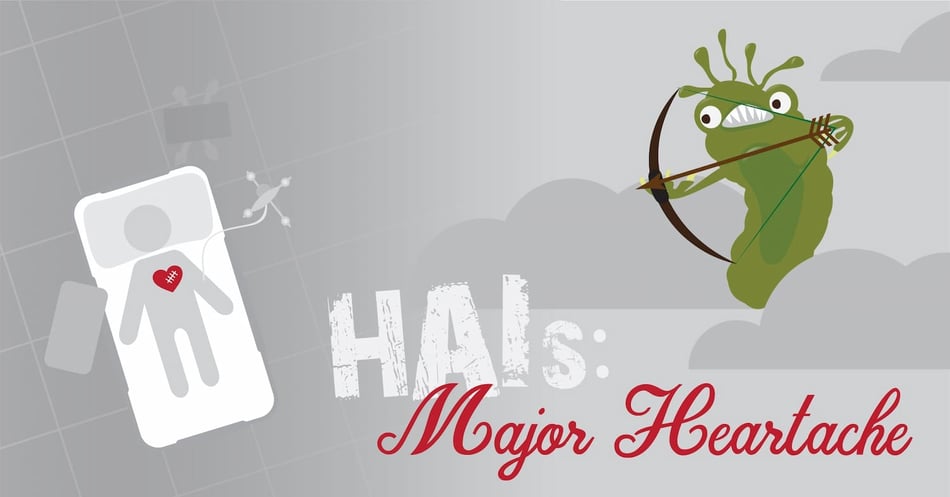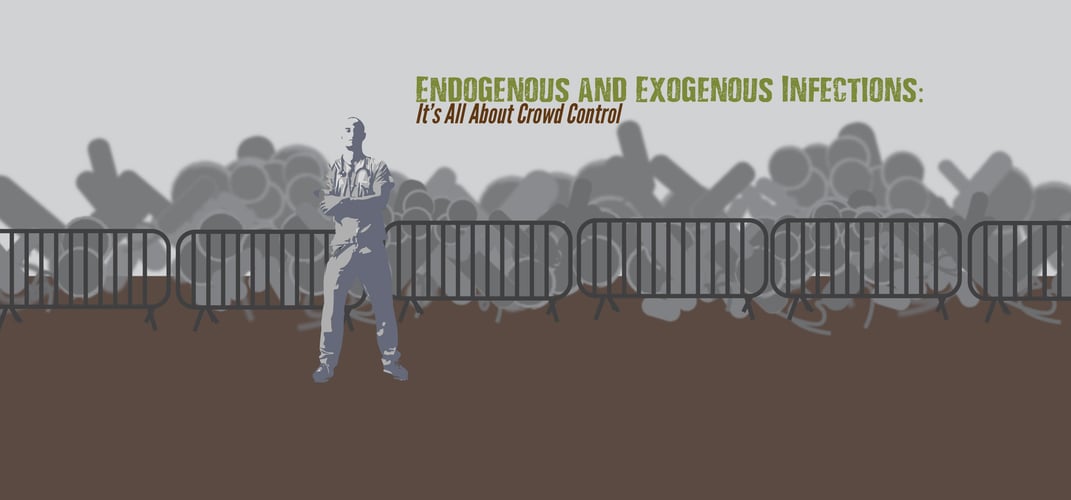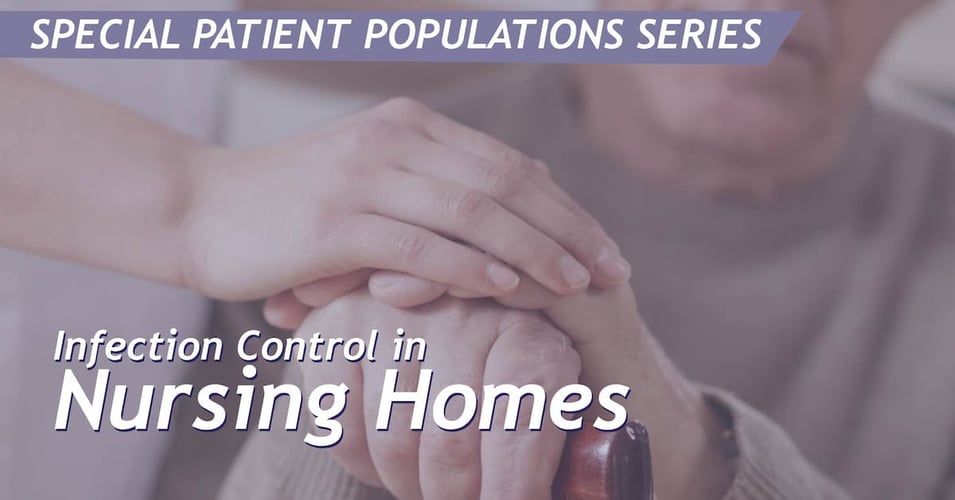HAIs: Major Heartache

It's no wonder why we have long associated the heart with life and love. It races when we are nervous or exerting ourselves. It beats with comforting regularity, loud enough for us to hear when we rest our heads against a loved ones chest. Its pulse is an indicator of health and life, a central hub keeping our body functioning. And unfortunately, when this central hub is affected by an infection, the entire body is at risk. Today we will explore how hospital-acquired infections can affect the heart, often with far-reaching implications.
The heart, like many internal organs, is surrounded by a sterile environment. While some organs, such as the stomach and lungs, interact regularly with the outside world, including bacteria, the heart remains in a closed system devoid of any microorganisms. That is, unless the sterile barrier is breached and a pathogen is introduced. There are three major ways a heart can become victim to a hospital-acquired infection.
Sepsis
A potentially life-threatening condition, sepsis involves a body's extreme reaction to an infection. Typically, sepsis involves changes in body temperature, elevated heart rate, rapid breathing, and low blood pressure. When sepsis has progressed, it can cause radically reduced blood flow to internal organs, including the heart. Recently, studies have identified the cause of heart damage in sepsis patients: The release of specific nuclear proteins called histones into the bloodstream. These proteins damage the heart muscle cells, leading to heart complications. However, these very histones can be used as a marker to let a doctor know if a patient is at risk for heart damage, giving advance notice that provides time for treatment with antibodies. The danger is that any hospital-acquired infections can lead to sepsis, so prevention is key.
Extended ICU Stay
Studies show that the longer a patient remains in the ICU after cardiac surgery, the higher the risk of death. In a recent study, however, the extent that hospital-acquired infections play in that increased mortality has been determined. Almost 50% of patients with extended stays in the ICU contracted at least 1 HAI. Of particular risk to cardiac patients were surgical site infections and central line infections, especially if the pathogen was a multi-drug resistant organism (MDRO) such as VRE or MRSA. In fact, patients who contracted an MDRO had a 5-fold increased risk of mortality. This data points to the unique vulnerability of the cardiac patient and the need for biocidal interventions in cardiac ICUs, especially those that can reduce MDROs.
Heater/Cooler Devices
We would be remiss if we didn't mention a major threat to cardiac surgery patients that emerged within the last few years: Outbreaks of infection linked to heater-cooler devices used in the operating room. These devices, essential to regulate the patient's blood temperature during the procedures, were shown to have been contaminated at the point of manufacture, leading to aerosolized pathogens that could land on the patient. While this outbreak represents an isolated situation that was rapidly remedied through recalls, redesigns, and replacements, the numbers of people impacted by this outbreak could continue to grow since the organisms can take several years to lead to symptoms in the patient. Cardiac patients at risk for infection were notified and tested, and will continue to be monitored for years to come.
This Valentine’s Day, you will no doubt hear about heart health and heart disease. When you hear about these important topics, take a moment to remember that hearts also pay a price for hospital-acquired infections - not to mention the heartbreak felt by family and friends.
![EOScu Logo - Dark - Outlined [07182023]-01](https://blog.eoscu.com/hubfs/Eoscu_June2024/Images/EOScu%20Logo%20-%20Dark%20-%20Outlined%20%5B07182023%5D-01.svg)

![[infographic] Sites & Types of HAIs Download and share!](https://no-cache.hubspot.com/cta/default/216314/interactive-178207379828.png)



